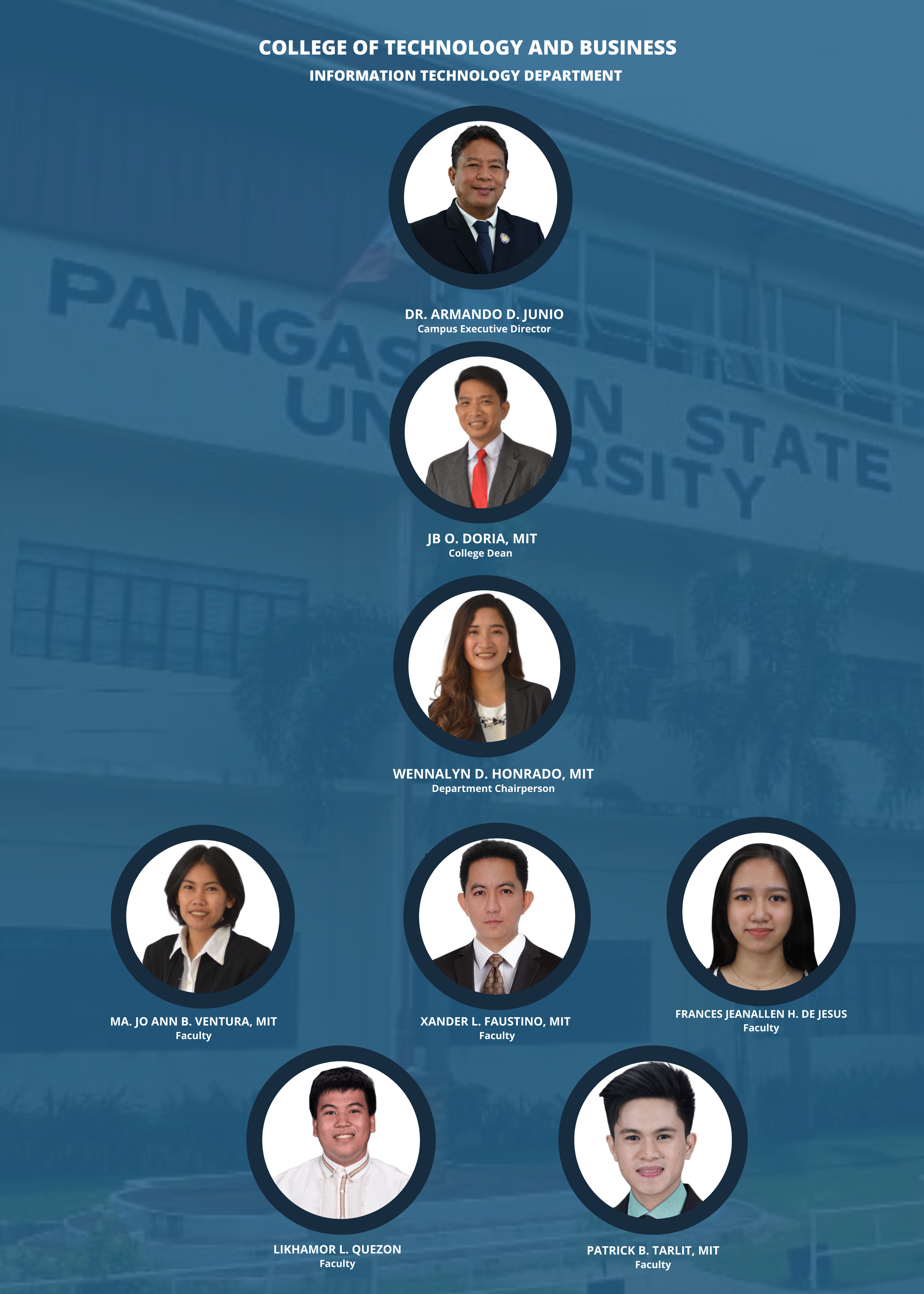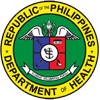
Welcome to the IT Department!
We are living in a fast changing world, a changing society, progressing at a speed, impact of science, scientific research, technological development, the use of technology on our daily life is vibrant and significant. With this mind, the Bachelor of Information Technology (BSIT) program of PSU Asingan campus produces information technologists who can assist individuals and organizations in solving problems using information technology techniques and processes. This engages students in various field experiences, internship and service learning opportunities that will allow them to understand the connection between theory and practice.
The victorious journey of Bachelor of BSIT program in achieving the award of Level 3 Accredited by the Accrediting Agency of Chartered Colleges and Universities in the Philippines (AACCUP) strived more in imparting excellence in the quality education we provide, incorporating greater space for creativity, innovation, attainment of skills and excellence in in the field of advance technology and system. Through immersion in various learning experiences that involve project based learning and learning by making, students are exposed to a culture that prepares students to be IT professionals who are able to perform installation, operation, development, maintenance, and administration of computer applications.
The Program comprises dedicated and highly qualified faculty members whose teaching and research experience help to create a dynamic and engaging virtual and physical learning environment.
We hope that prospective students feel encouraged to join our community of high-achieving and technologically advanced in academics with innovative learning, teaching and research in adoption and utilization of modern technology.
Miss Wennalyn D. Honrado
Program Description
The BS Information Technology program includes the study of the utilization of both hardware and software technologies involving planning, installing, customizing, operating, managing and administering, and maintaining information technology infrastructure that provides computing solutions to address the needs of an organization.
The program prepares graduates to address various user needs involving the selection, development, application, integration and management of computing technologies within an organization.
Program Objectives
The intent of the Information Technology program is to produce graduates who are able to meet the demands of the IT professional in the industry, both local and national area and in the ASEAN region. It has the following objectives:
- Undertake projects that show ability to solve complex problems and to work in teams on problems whose solutions lead to significant societal benefits.
- Communicate effectively with diverse stakeholders as well as function appropriately in a team environment.
- Demonstrate ethical behavior as an IT professional and sensitivity to the impact of technology and society.
- Engage in lifelong learning and professional development.
-
Organizational Chart

EMPLOYMENT OPPORTUNITIES
|
|
|
Program Outcomes
|
GRADUATE ATTRIBUTES |
PROGRAM OUTCOMES CODE |
GRADUATE OUTCOMES |
PERFORMANCE INDICATORS |
|
Knowledge for solving computing problems |
PO1 |
Apply knowledge of computing, science, and mathematics appropriate to the discipline |
|
|
PO2 |
Distinguish best practices and standards and their applications |
|
|
|
Problem analysis |
PO3 |
Analyse complex problems, and identify and define the computing requirements appropriate to its solution |
|
|
Knowledge for solving computing problems |
PO1 |
Apply knowledge of computing, science, and mathematics appropriate to the discipline |
|
|
PO4 |
Identify and analyse user needs and take them into account in the selection, creation, evaluation and administration of computer-based systems |
|
|
|
Design, development of solutions |
PO5 |
Design, implement, and evaluate computer-based systems, processes, components, or programs to meet desired needs and requirements under various constraints |
|
|
PO6 |
Integrate IT-based solutions into the user environment effectively |
|
|
|
Modern Tool Usage |
PO7 |
Apply knowledge through the use of current techniques, skills, tools and practices necessary for the IT profession |
|
|
Individual and Team Work |
PO8 |
Function effectively as a member or leader of a development team recognizing the different roles within a team to accomplish a common goal |
Team member:
Leader of a team:
|
|
PO9 |
Assist in the creation of an effective IT project plan |
|
|
|
Communication |
PO10 |
Communicate effectively with the computing community and with society at large about complex computing activities through logical writing, presentations, and clear instructions |
|
|
Computing Professionalism and Social Responsibility |
PO11 |
Analyse the local and global impact of computing and information technology on individuals, organizations, and society |
|
|
PO12 |
Understand professional, ethical, legal, security and social issues and responsibilities in the utilization of information technology |
|
|
|
Life-Long Learning |
PO13 |
Recognize the need for and engage in planning self-learning and improving performance as a foundation for continuing professional development |
|


